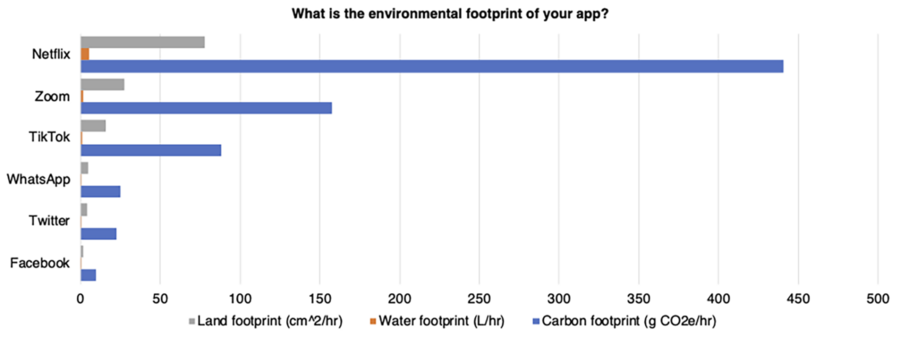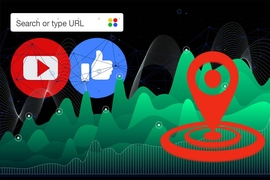Before you scramble to clean your room or attempt to make your pajamas look a bit less like pajamas, here is a good excuse to keep your video off during your next virtual meeting: reducing your environmental impact. New research shows that if you turn your camera off during a videoconference, you can reduce your environmental footprint in that meeting by 96 percent.
Conducted by a team from MIT, Purdue University, and Yale University, the study uncovers the impacts that internet use has on the environment. This is especially significant considering that many countries have reported at least a 20 percent increase in internet use since March 2020 due to the Covid-19 lockdowns.
While the shift to a more digital world has made an impressive dent in global emissions overall — thanks in large part to the likely temporary emissions reductions associated with travel — the impact of our increasingly virtual lifestyles should not be overlooked.
“The goal of this paper is to raise awareness,” says Maryam Arbabzadeh, a postdoc at the MIT Energy Initiative and a co-author of the study. “It is great that we are reducing emissions in some sectors; but at the same time, using the internet also has an environmental impact contributing to the aggregate. The electricity used to power the internet, with its associated carbon, water, and land footprints, isn’t the only thing impacting the environment; the transmission and storage of data also requires water to cool the systems within them.”
One hour of streaming or videoconferencing can emit between 150 and 1,000 grams of carbon dioxide, depending on the service. By comparison, a car produces about 8,887 grams from burning one gallon of gasoline. That hour also requires 2-12 liters of water and a land area about the size of an iPad Mini. Those hours add up in our daily lives with all the time we’re spending on video — and so does the associated environmental footprint.
According to the researchers, if remote work continues through the end of 2021, the global carbon footprint could grow by 34.3 million tons in greenhouse gas emissions. To give a sense of the scale: This increase in emissions would require a forest twice the size of Portugal to fully sequester it all. Meanwhile, the associated water footprint would be enough to fill more than 300,000 Olympic-sized swimming pools, and the land footprint would be equal to roughly the size of Los Angeles.
To store and transmit all of the data powering the internet, data centers consume enough electricity to account for 1 percent of global energy demand — which is more than the total consumption for many countries. Even before the pandemic, the internet’s carbon footprint had been increasing and accounted for about 3.7 percent of global greenhouse gas emissions.
While there have been studies evaluating the carbon footprint of internet data transmission, storage, and use, the associated water and land footprints have been largely overlooked. To address this gap, the researchers in this study analyze the three major environmental footprints — water, land, and carbon — as they pertain to internet use and infrastructure, providing a more holistic look at environmental impact. Their findings are published in Resources, Conservation and Recycling.
Using publicly available data, the researchers give a rough estimate of the carbon, water, and land footprints associated with each gigabyte of data used in common online apps such as Netflix, Instagram, TikTok, Zoom, and 14 other platforms, as well as general web surfing and online gaming. They find that the more video used, the higher the footprints.
A common streaming service, like Netflix or Hulu, requires 7 gigabytes per hour of high-quality video streaming, translating to an average of 441 g CO2e (grams per carbon dioxide equivalent) per hour. If someone is streaming for four hours a day at this quality for a month, the emissions rise to 53 kg CO2e. However, if that person were to instead stream in standard definition, the monthly footprint would only be 2.5 kg CO2e. That decision would save emissions equivalent to driving a car from Baltimore, Maryland to Philadelphia, Pennsylvania, about 93 miles.
Now multiply these savings across 70 million users all streaming in standard definition rather than high definition. That behavioral change would result in a decrease of 3.5 million tons of CO2e — equating to the elimination of 1.7 million tons of coal, which is about 6% of the total monthly consumption of coal in the United States.
“Banking systems tell you the positive environmental impact of going paperless, but no one tells you the benefit of turning off your camera or reducing your streaming quality. So, without your consent, these platforms are increasing your environmental footprint,” says Kaveh Madan, who led and directed this study while a visiting fellow at the Yale MacMillan Center.
While many service providers and data centers have been working to improve operational efficiency and reduce their carbon footprints by diversifying their energy portfolios, measures still need to be taken to reduce the footprint of the product. A streaming service’s video quality is one of the largest determinants of its environmental footprint. Currently, the default for many services is high-definition, putting the onus on the user to reduce the quality of their video in order to improve their footprint. Not many people will be interested in reducing their video quality, especially if the benefits of this action are not well known.
“We need companies to give users the opportunity to make informed, sustainable choices,” says Arbabzadeh. “Companies could change their default actions to lead to less environmental impact, such as setting video quality to standard definition and allowing users to upgrade to high definition. This will also require policymakers to be involved — enacting regulations and requiring transparency about the environmental footprint of digital products to encourage both companies and users to make these changes.”
The researchers also look at specific countries to understand how different energy systems impact the environmental footprints for an average unit of energy used in data processing and transmission. The data show wide variation in carbon, land, and water intensity. In the United States, where natural gas and coal make up the largest share of electricity generation, the carbon footprint is 9 percent higher than the world median, but the water footprint is 45 percent lower and the land footprint is 58 percent lower. Meanwhile, in Brazil, where nearly 70 percent of the electricity comes from hydropower, the median carbon footprint is about 68 percent lower than the world median. The water footprint, on the other hand, is 210 percent higher than the world median, and increasing reliance on hydropower at the expense of fragile rainforest ecosystems has other substantial environmental costs.
“All of these sectors are related to each other,” says Arbabzadeh. “In data centers where electricity comes from a cleaner source, the emissions will be lower; and if it's coming from fossil fuels, then the impact will be higher.”
“Right now, we have virtual meetings all over, and we’re spending more of our leisure time than ever streaming video content. There is definitely a paradigm shift,” she adds. “With some small behavior changes, like unsubscribing from junk emails or reducing cloud storage, we can have an impact on emissions. It is important that we raise public awareness so that, collectively, we can implement meaningful personal and systemic changes to reduce the internet’s environmental impact and successfully transition to a low-carbon economy.”
The study was supported by the MIT Energy Initiative, Purdue Climate Change Research Center, the Purdue Center for the Environment, and the Yale MacMillan Center.









